Shure MV7 vs SM7B: which mic is right for you?
Shure’s legendary recording mic and USB-equipped newcomer go head-to-head. Which will come out on top for recording podcasts, instruments and more?
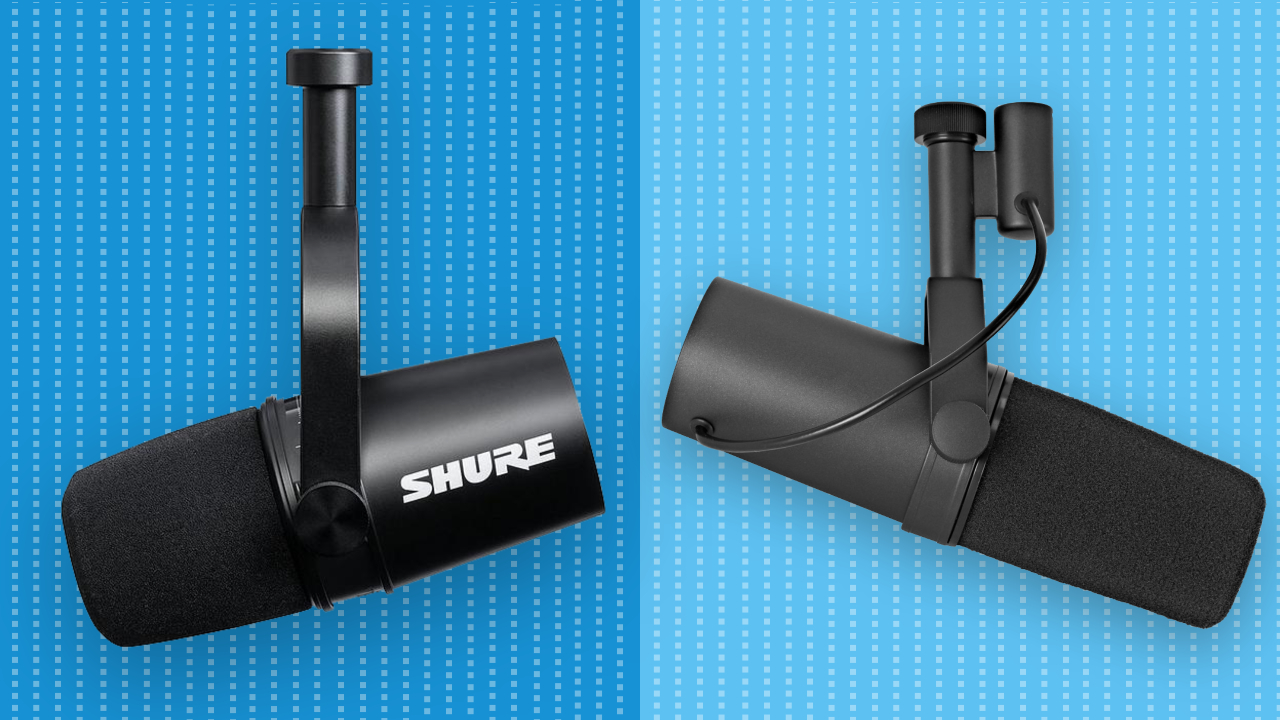
For decades the Shure SM7B was the go-to microphone for recording almost anything in an untreated room. If you wanted that rich, pro quality sound but didn't have access to an expensive studio you just had to reach for an SM7B and let it work its magic.
That's not to say it didn't excel in the studio too, it's been a favourite of countless vocalists, musicians and broadcasters. If you needed a pro-level dynamic mic, you'd go buy yourself an SM7B. Simples.
Then, in 2020, Shure muddied the waters by releasing the MV7, which looked and behaved just like a mini-me version of the SM7B. In this head-to-head we'll compare the two Shure mics so you can judge which is the right mic for your needs and budget.
Shure MV7 vs SM7B: at a glance
Shure MV7
- Price: $249/£259/€285
- Weight: 550g/1.213lbs
- Height: 164mm/6.457in
- Width: 153mm/6.024in
- Depth: 90mm/3.543in
- Transducer type: Dynamic
- Polar pattern: Cardioid
- Frequency range: 50Hz - 16kHz
- Sensitivity dBV/Pa: -55
- Maximum sound pressure: 132 dB SPL
- Output connectors: 3.5mm Jack, 3 Pin XLR, USB
- Read our Shure MV7 review
Shure SM7B
- Price: $399/£389/€429
- Weight: 765g/1.687lbs
- Height: 198.7mm/7.823in
- Width: 117mm/4.606in
- Depth: 96mm/3.78in
- Transducer type: Dynamic
- Polar pattern: Cardioid
- Frequency range: 50Hz - 20kHz
- Sensitivity dBV/Pa: -59.00
- Maximum sound pressure: 180+ dB SPL
- Output connectors: 3 Pin XLR
- Switchable low cut: yes
- Read our Shure SM7B review
The SM7B is a legend. It, or its closely related predecessor the SM7, has been used to record everyone from Mick Jagger, Brian Johnson and James Hetfield to Michael Jackson. You'll sometimes spot it during live performances, and it's very popular with both broadcasters and podcasters such as Joe Rogan and Marc Maron.
It's a robustly built, end address, cardioid dynamic microphone that boasts low sensitivity and can withstand high sound pressure levels. It's these qualities that make it perfect for recording powerful vocalists or instruments, and for rejecting ambient noise.
The SM7B is a simple mic with few controls other than a switchable bass rolloff filter and presence boost. Its unusual tubular shape - half windshield, half metal body - is unique. No other mic looks like the iconic SM7B.
Except, that is, the MV7. Looking very much like a SM7B that's been shrunk in the wash, it shares similar attributes and sonic characteristics but with a few modern additions such as USB connectivity and some very clever software. Importantly, the voicing is slightly different too.
Want all the hottest music and gear news, reviews, deals, features and more, direct to your inbox? Sign up here.
Shure MV7 vs SM7B: hardware & features
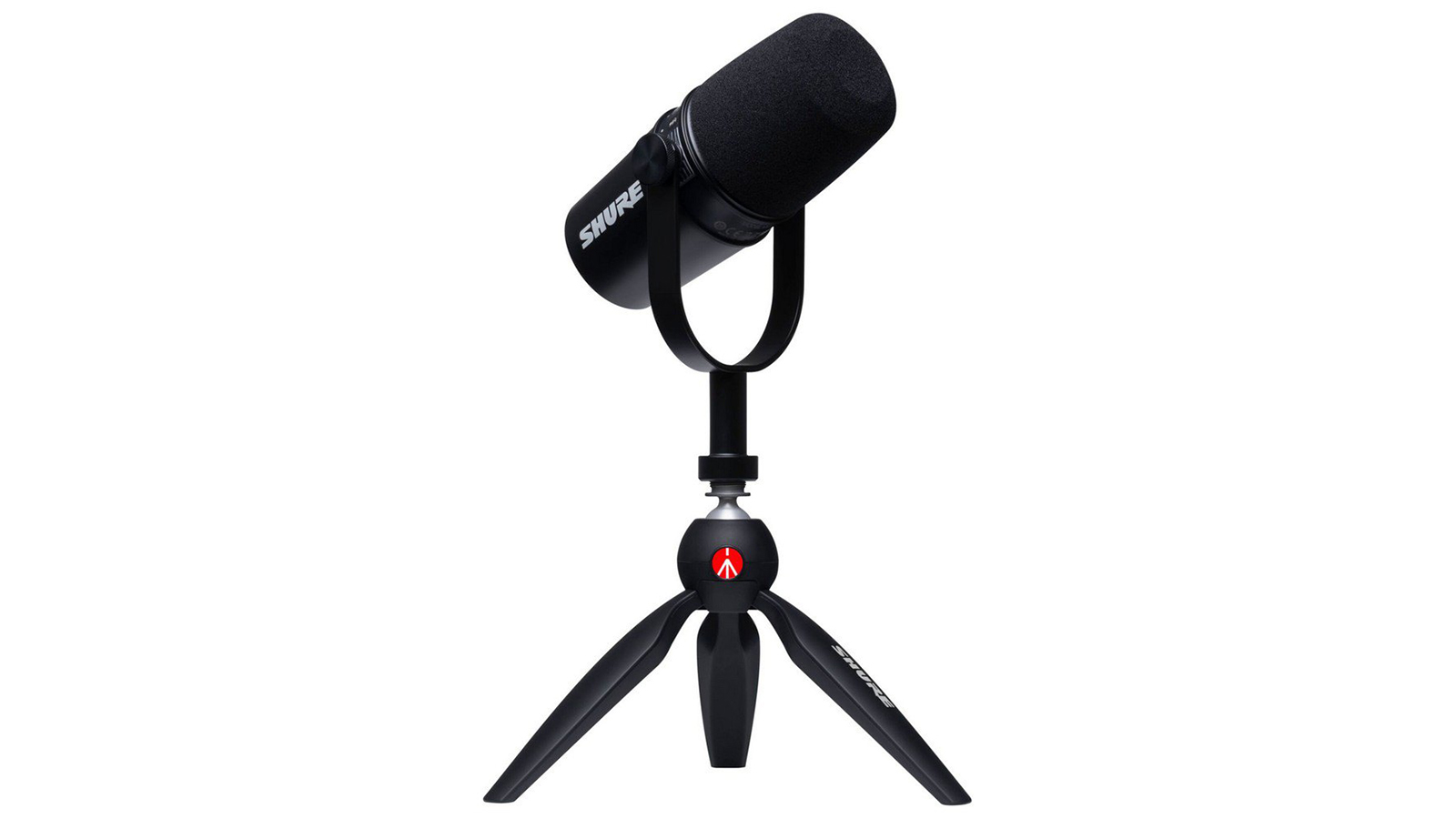
It takes just minutes to get au fait with the SM7B's feature set, perhaps less. You'll find two windshields in the box, a standard tapered design for most voice and instrument applications and a slightly more bulbous A7WS version for broadcast. Shure claims that the A7WS offers more protection from plosive breath noise but in our experience we rarely see anyone use it. More commonly, artists will remove the windshield completely to improve the SM7B's top-end response.
Round the back are two, small vertical switches that when selected in combination will yield a default flat response, a bass roll off or a presence boost. Integrated within the mic are a pop filter and shock isolation.
The MV7 offers many more features, including a touch sensitive LED levels panel that's used to monitor and adjust headphone volume, mic gain and the mix of the two. Both mics can be hooked up with XLR cables but the MV7 offers a Micro-B USB port too, which enables it to be configured using Shure's feature-packed MOTIV software.
The MV7 only has the one windshield but it does have a headphone out socket, which the SM7B lacks.
Winner: The MV7 takes the lead here because of the addition of USB, headphone out and touch sensitive levels panel.
Shure MV7 vs SM7B: build quality & design

Weighing in at 765g/1.687lbs, the SM7B is a hefty piece of kit with the build quality of a tank. These mics have a fabulous reputation for longevity, no doubt helped by their rugged steel and aluminium outer casing that's good for a few knocks and worse. There's no plastic in sight.
It's quite a lump too, at 198.7mm/7.823" long, 117mm/4.606" wide and 96mm/3.78" deep, but, to be fair, it's designed to be mounted on a stand rather than handheld. The heavyweight, integrated yoke stand makes positioning it a doddle but if you're a performer it will stop you from hurling it around ala Roger Daltrey (or, ahem, Kanye West).
The MV7 is about a third lighter at 550g/1.213lbs and smaller at 164mm/6.457" long, 153 mm/6.024" wide and 90 mm/3.543" deep. It also has an all-metal construction, and certainly feels tough enough to provide years, if not decades, of service.
Just like the SM7B, it features an integrated yoke stand that can be flipped 180 degrees for mounting on a traditional mic stand or hung from a boom arm.
Winner: The SM7B takes the lead here because of its proven track record for longevity.
Shure MV7 vs SM7B: tonal characteristics
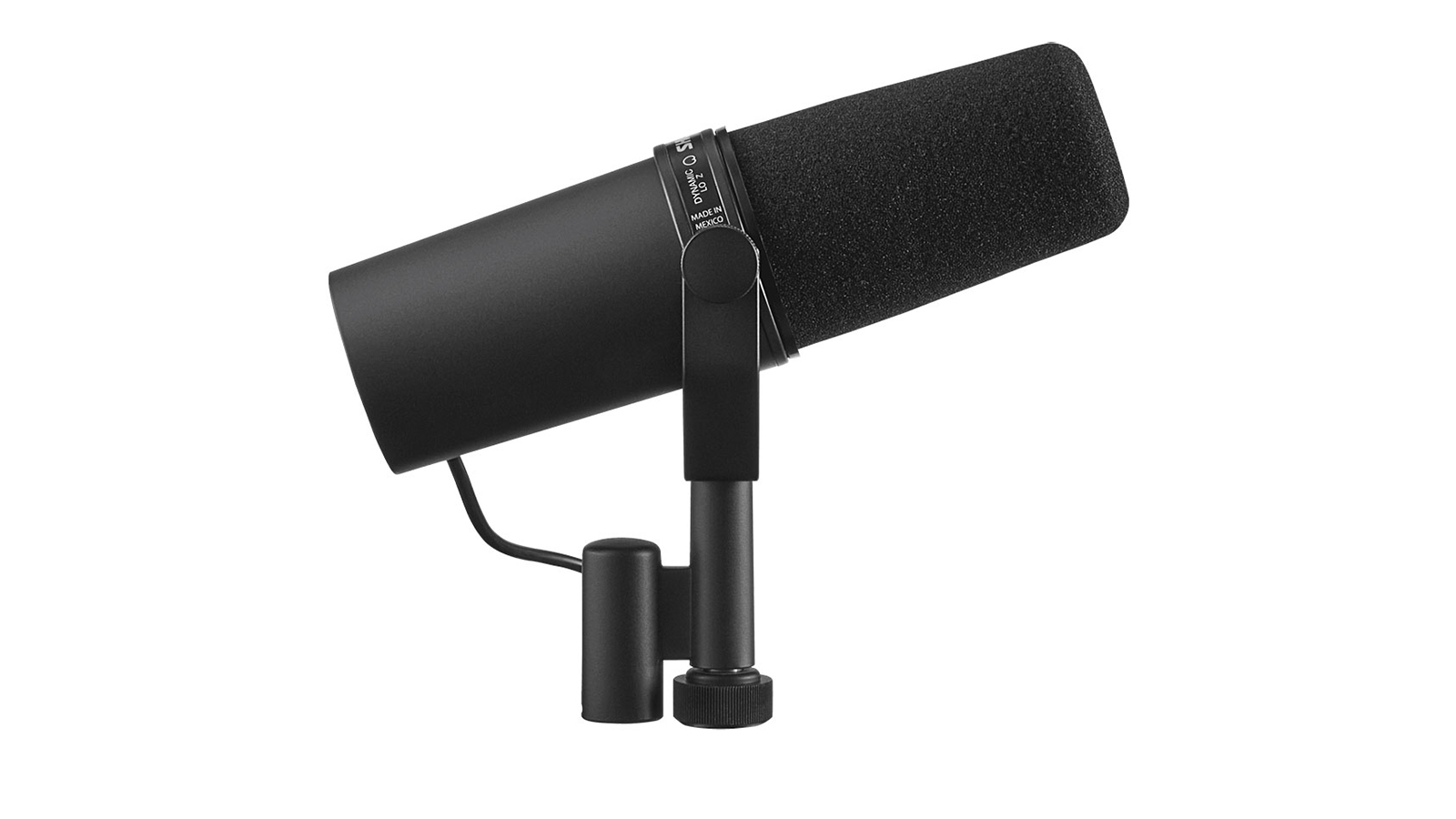
First the similarities. Both the SM7B and MV7 are low sensitivity, cardioid dynamic microphones with relatively flat frequency responses and high dynamic ranges. Neither can compete with even an average condenser microphone in terms of frequency range, which means they struggle at the high and low ends.
Consequently, they don't paint as accurate a picture as a condenser microphone will, a trait that seems undesirable but can be a distinct advantage. Hiss, hum, rumble and other sonic nasties sit at these extremes, which is why this pair of Shure mics have such an unrivalled reputation for rejecting ambient noise.
They are also capable of withstanding the kind of high sound pressure levels (SPL) that damage delicate condenser mics, making them a great choice for recording any loud sound source from heavy metal singers to guitar cabs.
There are some differences. The SM7B has a much flatter frequency response between 50 and 200 Hz, which means that most voices will retain their desirable warm, smooth richness. Its frequency response range is also slightly broader at the top end too - 50 Hz - 20 kHz vs 50 Hz - 16 kHz for the MV7 - which makes it a better mic for recording some instruments such as guitar.
Meanwhile, the MV7 has a distinct bump between 2k and 10k, which will enhance the clarity of vocals but may introduce sibilance issues (accentuating undesirable s and sh sounds).
Winner: The SM7B takes the lead here because of its broader frequency range and warmer bass.
Shure MV7 vs SM7B: in use
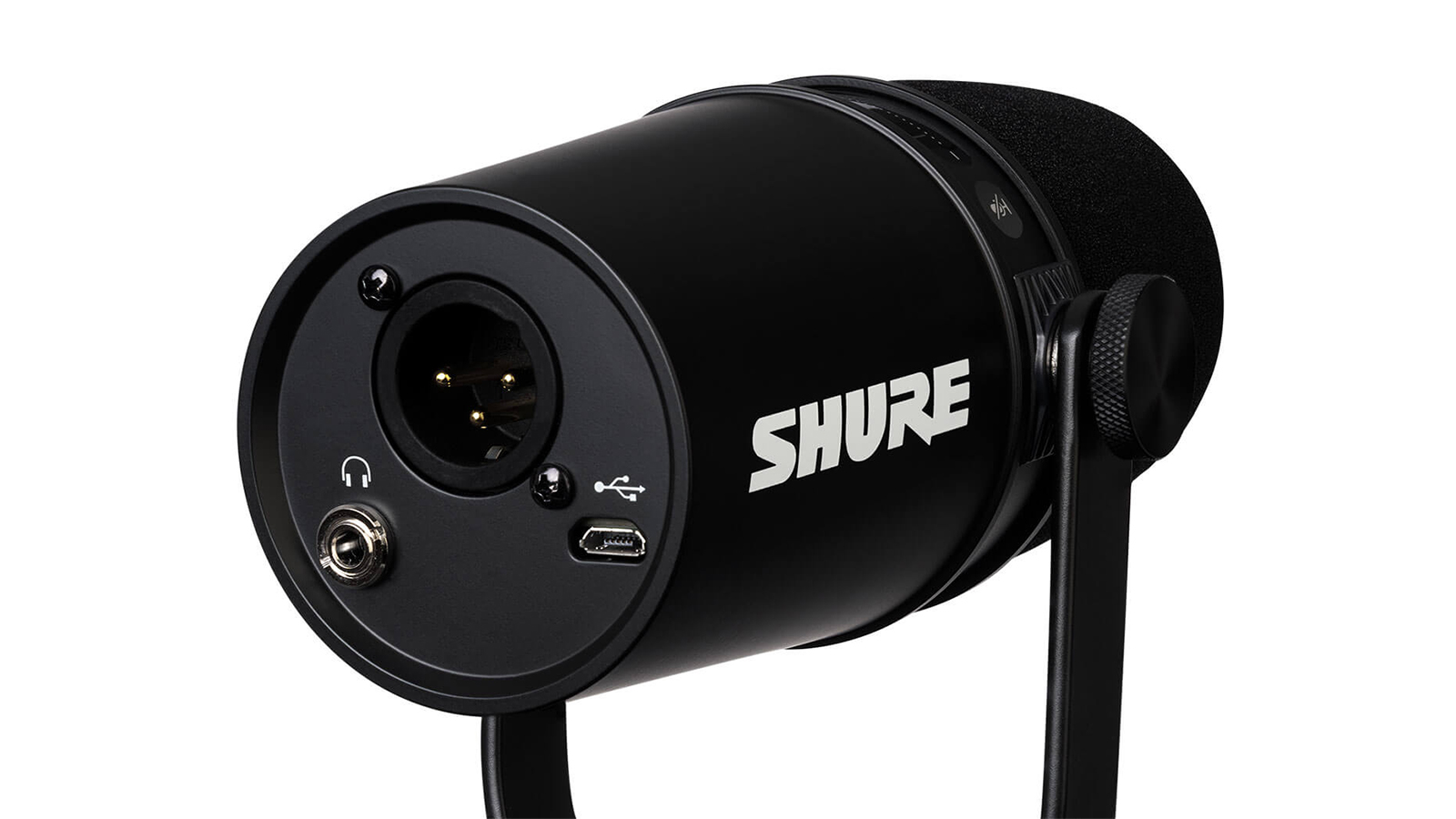
As previously mentioned, the SM7B is a very straightforward microphone, but to get the best results from it you'll need to master two vital settings - gain and mic placement. While the SM7B rightly has a reputation as an awesome dynamic mic it's also infamous for being a gain-hungry monster. Its low sensitivity rating of just -59dBV/Pa means it needs plenty of clean gain - Shure recommends at least +60dB - to bring it up to 0dB line level or your recordings will be quiet and potentially noisy.
Unfortunately, most consumer grade audio interfaces and mixers only provide about 40dB of gain, which means you'll have to invest in a Cloudlifter or preamp to provide you with enough additional boost.
Similarly, you'll need to get up and personal with the SM7B, bringing you or your talent's mouth no more than a few inches away, but that's not necessarily a bad thing. Close miking reduces the need for more gain, helps to reject ambient noise and will trigger the bass enhancing proximity effect, which makes voices sound richer.
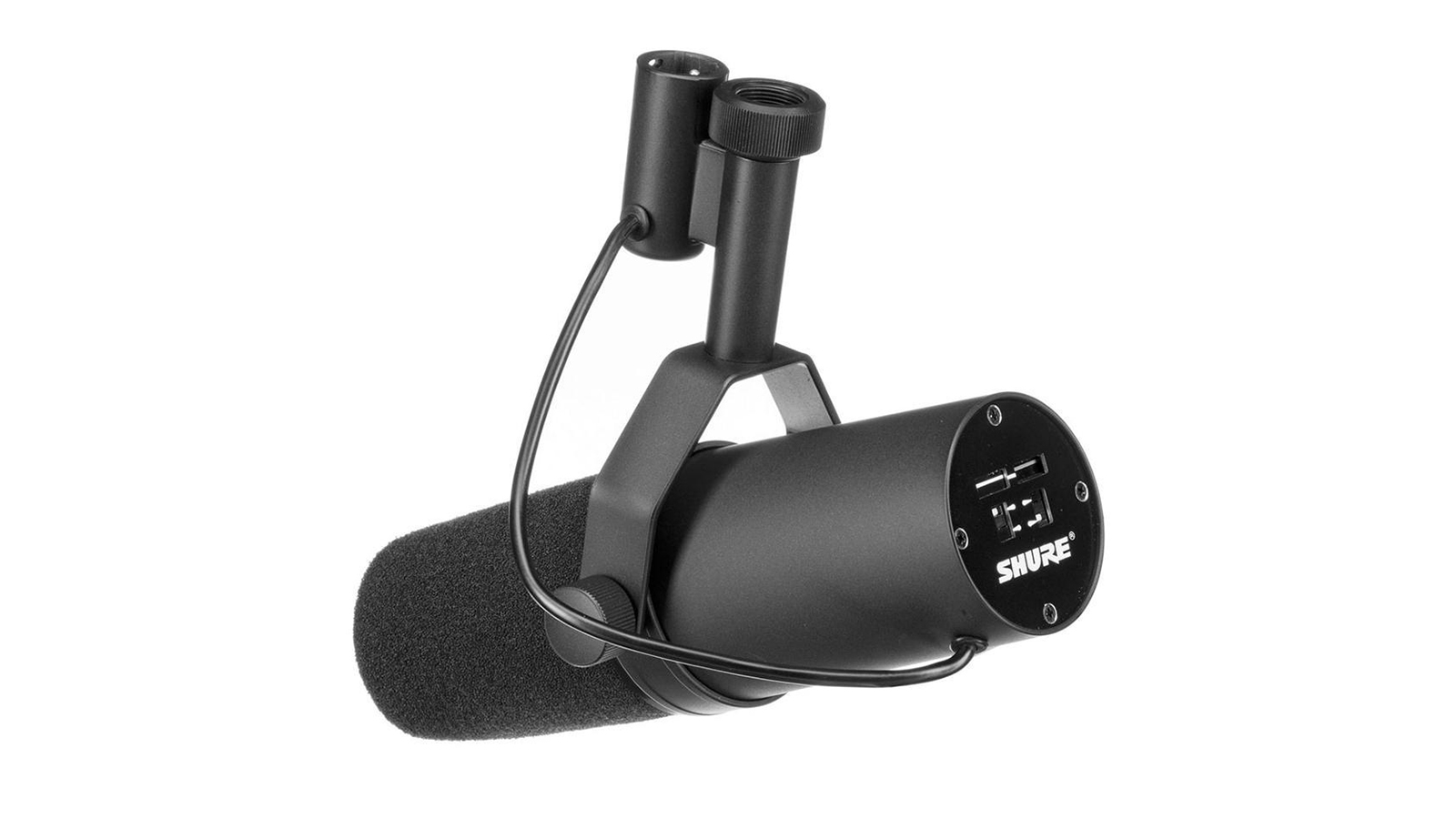
The MV7 is also partial to a healthy portion of gain but is nowhere near as greedy as its stablemate. In fact, plug it in to your laptop via USB and you'll immediately have access to 35dB of gain, which is quite sufficient.
Mic placement isn't nearly as critical either. Provided the MV7 is pointed accurately at the sound source, it performs best within one to six inches, but you can get away with three times that distance. This, and the fact that the MV7 is smaller, will appeal to YouTubers who don't want their faces obstructed by a large, close mic.
The onboard meters and headphone socket make monitoring a delight, but for ultimate control just fire up the MOTIV software on your laptop. Provided you're working over USB you'll be able to adjust optimal settings for gain, monitor mix, mic position, compression and EQ. Best of all, if you're new to this recording lark or have no interest in the technical side, you can select Auto Level and leave the software to calculate the best settings for you.
Winner: The MV7 takes the lead here because its additional modern features make it a joy to use.
Shure MV7 vs SM7B: verdict
So, which microphone is better? Should we all switch our allegiance away from the ruling but ageing SM7B, and instead embrace the new pretender, the MV7, with open arms? Well, no, it's not quite as simple as that.
Or is the MV7 little more than a cheaper, second-rate SM7B with a few additional fancy bells and whistles? Yes, it was shrewd of Shure to model the MV7's appearance on the SM7B but it’s way more capable than a lookie-likey budget mic.
In truth both microphones cover similar ground, but they've been developed for slightly different markets.
The SM7B is relatively large and heavy, certainly too bulky for guerrilla-style podcasters to comfortably carry around in a small backpack together with a laptop, mic stand, interface and possibly a Cloudlifter.
Yes, that gain issue. The SM7B is already about a third more expensive than the MV7, but you'll also need to factor in another $100/£150 for a Cloudlifter. It's XLR only too, so you'll have to find another $20/£15 for cables and, if you don't already have one, at least another $100/£100 for an interface. It quickly adds up.
If you're studio based and have the funds then the SM7B is well worth the outlay.
Of course, if you're studio based and have the funds then the SM7B is well worth the outlay. In fact, compared to a decent condenser mic we believe it offers astonishing value for money. What's more, if you're recording in an untreated home studio then it makes even more sense. No other mic provides you with the winning combination of broad frequency response, high SPL tolerance, warm tone and, most importantly, superb ambient noise rejection.
No love for the MV7 then? Not at all, but we believe Shure's spot on when it describes it as a 'podcast microphone, inspired by the legendary SM7B'. The MV7 is small, light, comparatively inexpensive and has a tonal fingerprint that's been developed specifically to bring clarity to the spoken voice. At a push it can be used to record sung vocals or guitar cabs and other loud instruments but, frankly, the SM7B is a better choice for these applications.
The addition of USB and a headphone output socket are the features that make the MV7 shine. They reveal opportunities to use it with nothing more than a laptop and a portable mic stand, plus you'll benefit from Shure's easy-to-use MOTIV software.
In a nutshell, if you're recording a variety of sources from a fixed base buy the SM7B, but if you're a podcaster on the move the MV7 will make you happier than a seagull with a chunky-cut chip.
When Simon's childhood classical guitar teacher boasted he 'enjoyed a challenge', the poor man had no idea how much he'd underestimated the scale of the task ahead. Despite Simon's lack of talent, the experience did spark a lifelong passion for music. His classical guitar was discarded for an electric, then a room full of electrics before Simon discovered the joys of keys. Against all odds, Simon somehow managed to blag a career as a fashion journalist, but he's now more suitably employed writing for MusicRadar and Guitar World. When not writing or playing, he can be found terrifying himself on his mountain bike.
